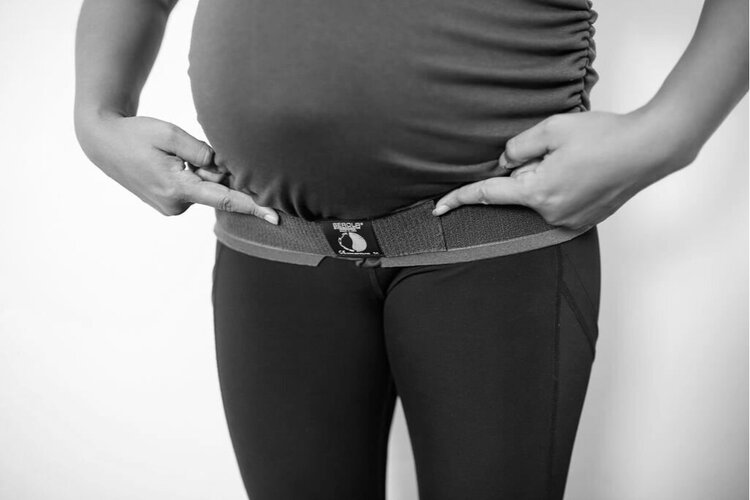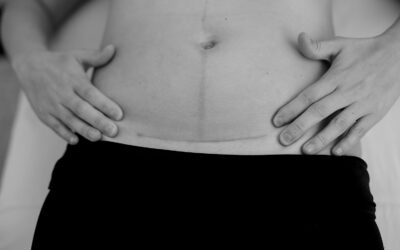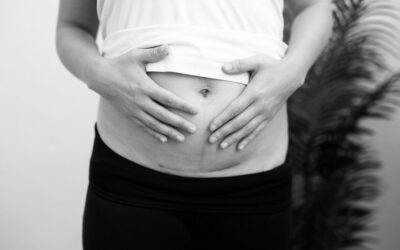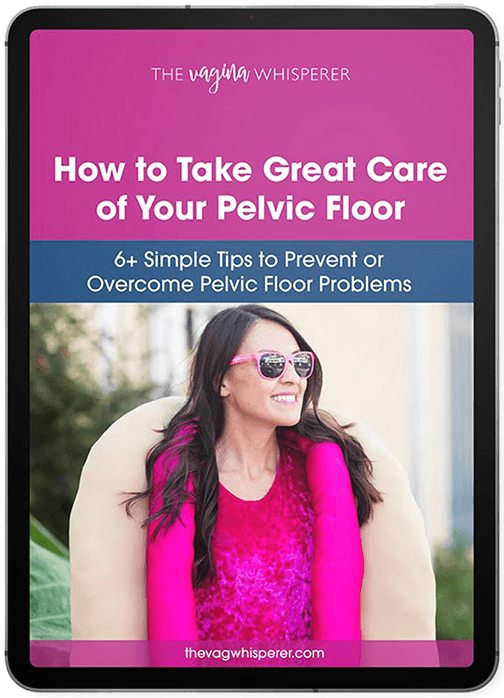Do you have pubic bone pain after birth? We talk about pubic symphysis pain during pregnancy. And many times pubic bone pain postpartum resolves after birth. But, what if the pubic pain doesn’t go away? What if your doctor tells you have pubic symphysis separation postpartum?
Postpartum pubic bone pain
Postpartum pelvic pain is very common. Pubic bone pain can impact up to 50% of postpartum women. Conditions affecting the pubic bone during pregnancy and birth include pelvic girdle pain (PGP), symphysis pubis dysfunction (SPD), and osteitis pubis. Pubic symphysis separation is also known as pubic symphysis diastasis.
The superior pubic ligament is a strong band of connective tissue that connects the pelvic bones to the anterior aspect of the femur. It helps to stabilize the hip joint. Hyaline cartilage is a type of tissue that provides support, flexibility, and ease of movement. Unfortunately, this cartilage can become worn down or damaged due to injury, age, or childbirth.
SPD is the widening of the pubic joint of more than 10 mm. It is a complication of vaginal childbirth or pregnancy. Try the following exercises while still in the hospital if there is no increase in pain:
Diaphragmatic Breathing
Taking deep breaths. You should you feel your ribcage expand all the way around (360 degree breathing). Then gently relax back down. Consider spending 1-2 minutes doing diaphragm breathing a few times a day.
Gentle Transverse Abdominis isometrics
Contract the deep abdominal muscles known as your TA. Find them inside your hip bones in the front. Imagine you’re putting on a tight pair of pants or fogging up a mirror (like a deep huff). Do this for 3-5 seconds, on an exhale, to help with the contraction. Do 5-10 repetitions a few times a day.
Gentle Pelvic Floor Isometrics
Gently contract your pelvic floor muscles on an exhale. Imagine you are stopping the flow of urine, holding back gas, or picking up a bean with your vagina. Do this gently for the length of your exhale, then relax on inhale. Repeat 5-10 times a day.
Gentle Gluteal Isometrics (Butt Squeeze)
Squeeze your butt muscles for 3-5 seconds, 10 repetitions, a few times a day.
How long it takes SPD to heal
This depends on many factors. What is the severity of your separation? Did you have any other birthing complications? How is your health in general? You’ll want to see a PT specializing in pelvic health/postpartum as soon as you can. This is especially true if your symptoms have not improved at 6 weeks postpartum.
Pelvic physical therapy for pubic bone pain postpartum
Pelvic floor physical therapy will be helpful for pubic bone pain postpartum. If you can, use a sacroiliac belt. It can provide pain relief when you are upright and moving around your home. In addition, here’s how PT can help:
- Instruction on movement strategies during functional tasks (stairs, bending, lifting, feeding baby, etc.).
- Education on progressive exercises for neuromuscular re-education, core stabilization, and posture.
- Manual therapy, including pelvic assessment and muscle energy techniques to address pelvic positioning.
- Assessments for tissue dysfunction or incoordination.
Tips for managing everyday movement and activities
A good rule of thumb is to imagine that you are wearing a pencil skirt during all activities. Separating the knees may create tension through the pubic symphysis. This may cause you pain. Over time, you will tolerate more movement through your legs. For now, move only as pain allows.
Bed Transfers – The Log Roll Technique
- To get into bed, try the following: Sit where you want your hips to land in the bed. Lay down on your side. As you exhale, keep your knees together as you bring both legs onto the bed. Keeping knees together, roll onto your back.
- To get out of bed with minimal pain and discomfort, try the following: Roll onto your side. Keeping your knees together, slowly drop your legs off of the bed. As you exhale, press up with your arms as you bring your torso upright.
Navigating Sleep
Place a pillow between your legs and lay on your side to help support your pelvis at night. A pillow behind your back serves as a bolster to help you maintain this position. Avoid “frog-leg” position where the top leg crosses up and over the bottom leg, to avoid asymmetry.
Vehicle Transfers
- To get into a car with ease try these steps: Open the car door. Back your body up to the car seat so that the backs of your legs touch the side of the seat. Sit down by hinging your hips back. As you exhale, bring your legs into the car while keeping your knees and lower legs together.
- To get out of a car with ease try this: As you exhale, keep your knees together as you lift your knees and lower legs out of the vehicle. Place both feet on the ground. As you exhale, push off of the car seat to help you stand.
Lifting Your Baby
Try these steps for picking up your baby for minimal SPD pain: You may have to squat to lift or lower your baby from/to their sleeping surface. Keep your feet square to the surface and maintain even leg weight distribution. Hinge at your hips and let your knees bend gently to reach the surface’s height. As you exhale, gently lift baby and straighten legs, keeping spine in neutral.
Walking
Walking may be painful, especially if you take longer strides. If you are having pain with walking, try taking shorter steps to reduce pubic stress. You may need a walker or crutches to help manage pain, especially after the initial injury.
Stairs
Going up and down stairs may be painful. Try going up and down sideways, one step at a time to decrease stress through your pubic area. If you have less pain on the left side of your pelvis, lift the left leg onto the higher step. If you have less pain on the right side of your pelvis, lift your right leg onto the higher step. Hold the railing for extra support, especially if you are carrying your baby.
______________________________________________________________________________________________________
Are you currently pregnant or planning to conceive? If so, download my FREE resource — How to Prepare Your Pelvic Floor & Core for Childbirth + 8 Must-Dos for C-Section and Vaginal Deliveries. ______________________________________________________________________________________________________
Some links may be affiliate links. The products we recommend are products we use or recommend to clients.





